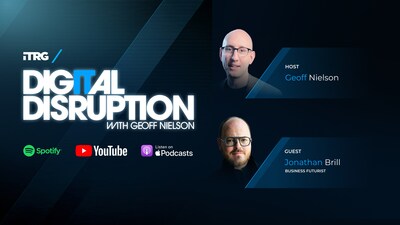AI Revolution: How Jonathan Brill Is Reshaping Business in the Digital Age

Navigating the Future: Enterprise Leadership in the Age of AI and Transformation
In today's rapidly evolving business landscape, enterprise leaders are confronting unprecedented challenges that demand radical reimagining of organizational structures and strategies. The pressure to accelerate innovation, seamlessly integrate artificial intelligence, and empower decentralized decision-making is driving a profound transformation across industries.
To help leaders navigate these complex shifts, Info-Tech Research Group has released its latest Digital Disruption podcast episode, featuring a groundbreaking conversation with Jonathan Brill. Recognized by Forbes as the world's top-ranked futurist and acclaimed by Harvard Business Review as "the world's leading transformation architect," Brill offers unique insights into the evolving dynamics of business innovation.
The podcast, provocatively titled "What AI Can Never Understand," explores the critical intersection of human creativity and technological advancement. It challenges leaders to think beyond traditional paradigms and embrace a more adaptive, intelligent approach to organizational design.
As businesses grapple with unprecedented technological disruption, Brill's expertise provides a crucial roadmap for leaders seeking to remain competitive and resilient in an increasingly complex global marketplace.
